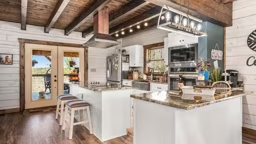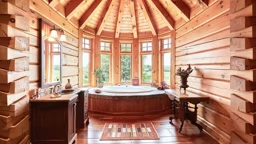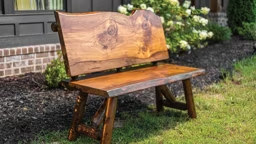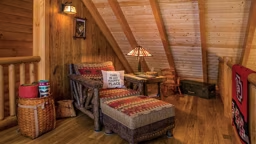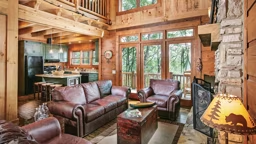
Hartley Botanic's website. Photo courtesy of Hartley Botanic US
Although an artfully landscaped, expansive garden can be breathtaking, let’s face it: That type of space is also a lot of effort. And while some people find groundskeeping to be a Zen-like experience, for others it’s simply a chore. Fortunately, you can capture that blissful feeling on a much smaller scale — that’s where garden rooms come in.
Just like the name implies, this space is often either within a dwelling (for example, a room with large windows within your home), under a covered space (like a four-season porch) or a defined space within your lawn, itself. Filled with a profusion of different plants, flowers and herbs, garden rooms often serve as a bridge between your larger landscape and your log or timber home’s interior.
To create your own garden room, start with a design-oriented mindset, and consider incorporating these elements into your plans:
Indoor: Go for Maximum Windows
Not all interior rooms are ideal for this type of effort. Sure, it’s entirely possible to keep plants healthy with artificial illumination, but part of the appeal of a garden room is the airy, spacious feel that comes from a space flooded with natural light. If your existing space already has plenty of windows, that makes it a good choice for a garden room. That might be a screened porch, a four-season room or just a particularly bright area on the outer edge of your house.
If you don’t have this option already, you can always add on. Consider what part of your home could benefit from a garden room and what type of construction effort might be needed for a space to add more windows. Ideally, look to the south-facing side of your home so you get the most sunlight throughout the day. If that won’t work with the existing structure, you also could design a small conservatory or glass house (essentially, a greenhouse that’s attached to your home) that is easily accessible via a connected door or pathway.
Outdoor: Get Cozy
If you have an outdoor area that you want to transform into a garden room, you’ll still want plenty of light, but you should also make it feel like a partial enclosure. This can be done by adding a ceiling of some type (metal, canvas, wood), a defined perimeter or an open pergola design that you weave with vining plants. The idea is to merge the feel of the indoors with natural options.
One way to blend these is with an outdoor space that has hardscaping for flooring, such as durable composite decking or brick pavers. You can use an outdoor rug as well, but keep in mind that it might require more maintenance than a hardscaped floor, which you can sweep easily.

Coordinate Your Outdoor Spaces
Already have some green space you’d like to convert to a garden room? It just takes a little planning. Look at the different elements you have in your existing yard and consider bringing those into your room, which will give you a better sense of continuity and cohesion. For instance, you might choose some of the same plants, or have a similar style for your benches and chairs, or include natural touches — elements like metal birds, driftwood or cairns — that are similar in both spaces. That will make the garden room seem like an extension of your landscape, rather than a distinctly separate area.
Refine the Plan with Function
Do you want the garden room as a quiet place to read or meditate? Or do you anticipate the space will be a raucous entertaining spot? Although these rooms can be used for either — and everything in between — it’s helpful to consider what activities you want to do most. That way, you can plan different elements based on that function. For example, you may install a small fountain that enhances relaxation, or one side of the room could be a large grill so you can cook for a crowd.
As with any landscaping project, determining your “why” for wanting a garden room can go a long way toward making it a space you’ll not only use, but enjoy.
Elizabeth Millard is an experienced gardener and the author of Backyard Pharmacy: Plants as Medicine. Find it in our article, What is Wellness Gardening?




